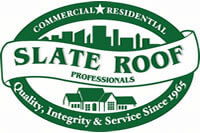When choosing to build a new roof for your home, there are many criteria to consider. Your home’s dimensions, performance needs, and your general style preferences will dictate which residential roof styles will work for your home. Understanding different types of roofs is also important because each style works best with specific materials and shingle types. Let’s take a closer look at the options.
Gabled roof
Perhaps the most common roof type is the gabled roof. The classic triangle shape you see on many homes old and new, gabled roofs are great for a variety of home types and can be built with a varying degree of slope. Gabled roofs are especially good in climates where you want snow and rain to slide down and away from your home. The simplicity of this roof style means you can use almost any shingle type and style, with asphalt shingles being most common.
The slightly more fashionable cousin to the gabled roof is the clipped gable. All elements of this roof style remain the same, except for the inclusion of indented hips on each ridge, making it a nice option if you want to elevate your home’s aesthetic and show off more high-end shingles, like luxury Ludowici tile or top of the line dimensional laminated shingles.
Hip roofs
Another roof style you will often see are hip roofs. These roofs are constructed with four sides that are usually (but not always) equal in length and meet at a top center ridge. This four-sided construction makes this roof type much more durable if your home is in an area with more extreme weather, as well as lending a more elegant appeal and the option for expanded attic space.
Asphalt shingles work well on this roof type, as do clay and concrete tiles. Be sure to select shingles you really love, as the increased surface area means you will be seeing almost all of your roof, all of the time.
Dutch gable
The Dutch gable roof borrows elements from both classic gable roofs and hip roofs. By essentially adding a small gable on top of a hip roof, it allows for expanded attic space, extra windows, and a more interesting appearance. This roof type also works with almost any shingle or tile, leaving room for personalization.
Gambrel roof
You may have seen a gambrel roof referred to as a barn roof. This roof type features two slopes on each side, one being a gradual slope and the other very steep. This roof type opens up the amount of space on the most upper level, creating a larger attic or living space.
Traditionally, you may see these roofs built with wooden shingles, although asphalt shingles work nicely as well. This roof type provides ample headroom, but may not be optimal for withstanding heavy weather conditions.
Mansard roof
Oui oui! If you’re looking for something classical, this traditional French roof style may be for you. Mansard is another style that allows for maximal use of the uppermost story of your home by opening up the space. It could be a giant attic, or homeowners can add windows and create a living space. These roofs are four-sided, each with an upper gentle slope and a steep lower slope.
Homeowners interested in this roof style may want to consider slate tile or other dimensional tile shingle to further enhance the romance and tradition of the style.
Shed roof
Constructed as a single surface with varying slopes depending on the build, a shed roof is perfect for those looking for something super sleek, modern, and unique. This roof type can be built with any shingle, but is most commonly done with asphalt or metal shingles. Structurally, a shed roof may not be the best option for more intense climates, but is a great choice if you live in an area without too much heavy rain and wind.
For homeowners who aren’t concerned with having a large attic space, and love the idea of an extra-large side of their home to install floor to ceiling windows, shed roofs are a great choice.
Flat roof
Most often associated with mid-century design, flat roofs are usually seen on single level/ranch style homes, as well as most apartment buildings and row houses. They are not really flat, they just have the lowest possible slope. When installed and maintained properly to avoid water damage, flat roofs can last 50+ years, and can be utilized as an additional outdoor living space in certain homes. These roofs are often layered with rubber or other watertight material as opposed to tiles or shingles since they’re not visible.


